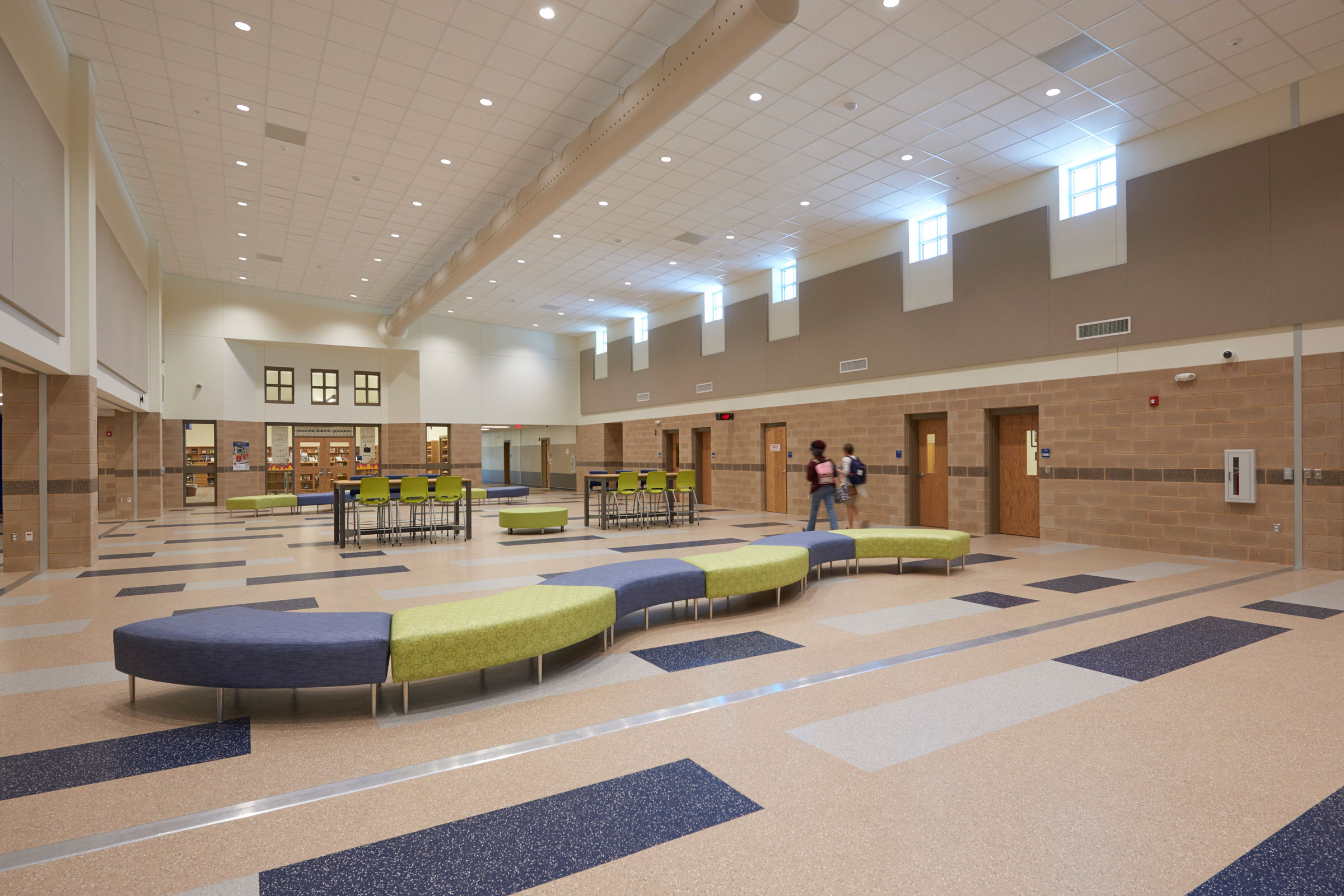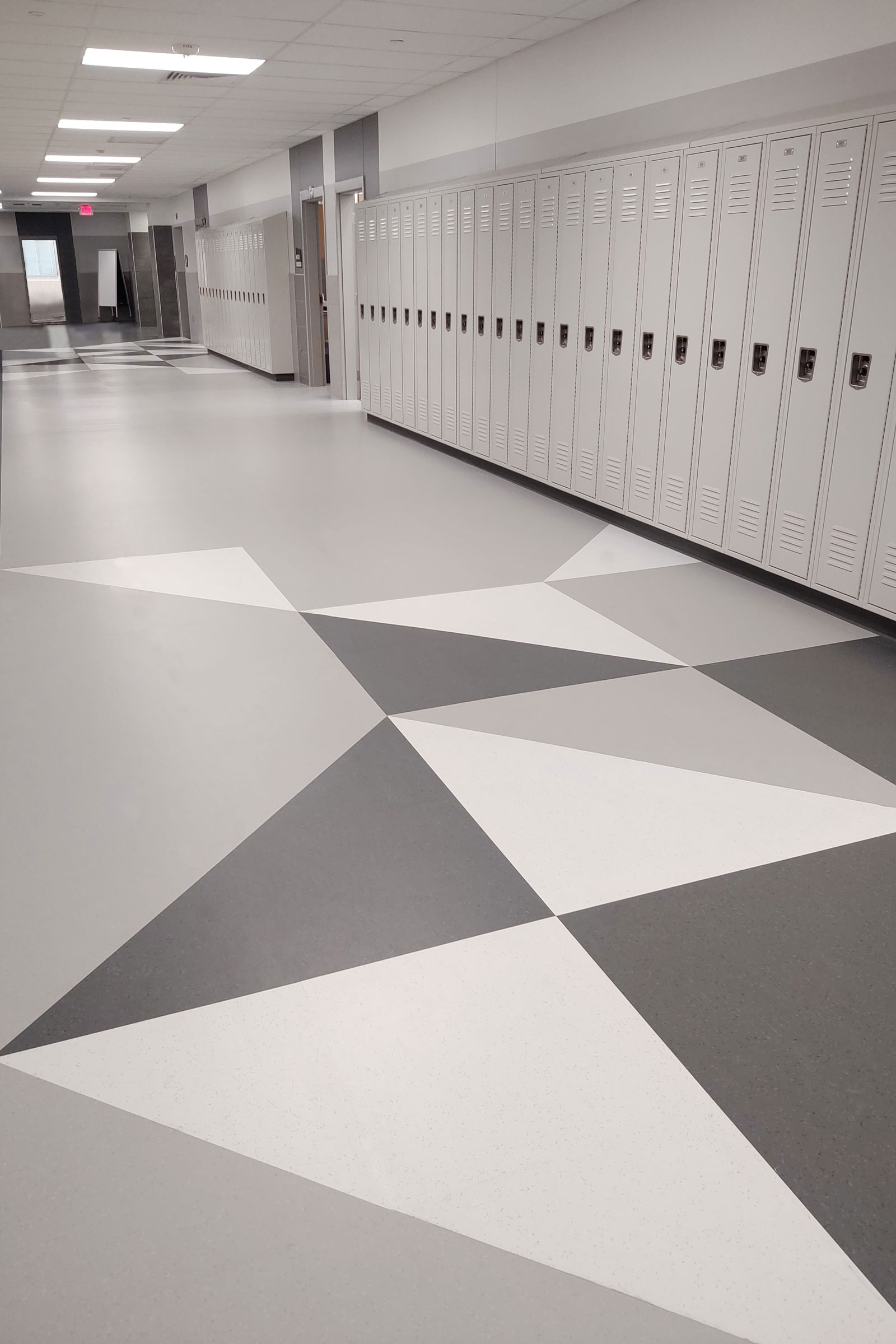Story at a glance:
- Rubber flooring has become increasingly popular as customers notice its numerous benefits.
- Unlike non-resilient flooring, rubber is durable enough to last decades without expensive maintenance or refinishing.
- Made without the use of Red List chemicals and fully recyclable, rubber flooring also has surprising sustainability benefits.
Economic indicators may have sent mixed signals from 2022 into 2023, but the US flooring market continues to see robust growth buoyed by population growth and urbanization as well as an increase in demand for residential and commercial renovations.
But for architects, developers, and building owners who prioritize resilient and sustainable design, not all flooring materials are created equally. Materials that were once considered niche, like rubber, are breaking into the mainstream as customer demand rises for products that will last longer and make their way back into the circular economy at the end of their life cycle.
Fortunately for designers who haven’t yet worked with rubber or other resilient flooring options, it’s easier than ever to incorporate them into any project—whether that’s a renovation or new construction.
“The best way to incorporate rubber flooring into a space is to first define who the occupants will be,” says Dee Dee Brickner, marketing manager at Roppe, a top manufacturer of resilient flooring products. “Does the space require resiliency? Do the users require flooring that reduces fatigue? Does the flooring design define a particular space use?”
Roppe was founded in 1955 in the small midwestern town of Fostoria, Ohio, where the company’s headquarters remain today. The firm got its start manufacturing high-quality rubber materials like durable wheelchair tires before transitioning into commercial flooring products. “We are family-owned and operated, and our employees are an integral part of that family,” Brickner says. “We see generations of family members among our team. It’s a really special place to work.”
Though many flooring manufacturers have been hampered by inflation and supply chain issues, Roppe has been able to mitigate the worst of the impact through the advanced purchase of raw materials. This has allowed them to take advantage of the strong demand for new flooring. “Our marketing message, ‘Roppe is Ready,’ continues into 2023. We have the raw materials, the capacity, and staffing to ship products within three weeks of receiving the order,” Brickner says.

Rubber flooring continues to be popular in health care spaces, too, because of its durability and ease of cleaning. Photo courtesy of Roppe
In the past rubber flooring was traditionally used in hospitals and other health care settings or in industrial facilities where aesthetics took a back seat to greater concerns about durability and ease of cleaning. But what originally started as a more utilitarian product “has definitely evolved into a product that now takes center stage in many designs across many segments,” Brickner says.
Today rubber flooring is available in a wide variety of visual colorations and patterns that can coordinate with or complement other looring materials. Designers also have the ability to custom-cut floors in-house or with skilled craftspeople, facilitating its use in a much broader array of use cases.
“Rubber floors are applicable for all spaces,” says Brittany Walker, interior design studio lead at Stantec. “The design of rubber flooring has come a long way even within the last 10 years. We think of rubber flooring for all education spaces, workplace common spaces, retail, and community buildings.”
The design of rubber flooring has come a long way even within the last 10 years. We think of rubber flooring for all education spaces, workplace common spaces, retail, and community buildings.
There is also a greater appreciation in the design community for how the color of a space impacts its occupants. For example, brightly colored spaces can invoke feelings of joy and inspiration among students, while neutral colors encourage relaxation and provide a calmness and familiarity for aging guests that also promotes comfort and healing. “Choosing flooring that supports the desired emotion of the space while functioning appropriately is the goal,” Brickner says.
Advances in design may have opened the door to a far greater range of applications for rubber flooring, but the material’s multitude of tangible benefits remain its biggest selling point. While it may cost a bit more upfront, its strength and longevity mean it lasts far longer.
“Rubber flooring wears well, offers great durability, and requires minimal maintenance, so over the life cycle it’s a smart investment,” Brickner says. Although initial costs average slightly higher than some competing products, rubber comes out on top when comparing life cycle costs, given that it won’t need to be replaced every five to 10 years.
The durability of rubber flooring is rooted in the vulcanization process, where exposure to heat, steam, and pressure bonds the rubber molecules together into a resilient yet flexible material. Other flooring options, like thermoplastics, PVCs, or Linoleum, are void of molecular crosslinking and require layers of coating to protect the material, which must be frequently reapplied.
- Roppe replaced the flooring in the STEM program department at Westerly High School with smooth and hammered marbleized rubber tile. Photo courtesy of Roppe
- This new high school project features Roppe Envire Rubber Tile for its tonal chip look and was specified in white, smoke, and charcoal. The designer elevated the installation by cutting the 24-by-24-inch tiles in half diagonally, creating a unique aesthetic at the ends of the hallways that trails into the solid field color of the corridors. Photo courtesy of Roppe
That was the case with Westerly High School in Rhode Island, which was originally built with less expensive vinyl composite tile flooring that required numerous layers of refinishing over the years and, eventually, an extensive matting system to prevent slip incidences.
Roppe was commissioned to replace the flooring in the STEM program department with its smooth and hammered marbleized rubber tile, which is resistant to scratching and can withstand high foot traffic for years—while also helping to reduce fatigue on occupants’ legs and backs.
“Rubber flooring offers an inherent slip resistance while also providing an under-foot comfort that eases fatigue for occupants,” Brickner says. “This is an especially important benefit where employees or guests are expected to utilize the space for extended periods of time.”
Another primary benefit rubber flooring offers for building owners and occupants is the ease at which it can be cleaned. Unlike competing materials rubber is nonporous so moisture and debris are not ground in by food traffic. It also has built-in properties that helps naturally repel dirt from its surface without the use of harsh chemicals. This has become especially important as staff shortages make regular cleaning more challenging.
“Demographic changes and economic challenges in the US have resulted in a shortage of qualified custodial staff knowledgeable about cleaning and maintaining flooring in commercial spaces,” Brickner says. “Commercial building owners are stretched to fit the increasing costs of cleaning and maintaining floors into their already tight budgets.”
Roppe’s Envire Rubber Sheet and Tile, for example, is a versatile application that can be utilized for any high-traffic commercial, education, or government setting—and it’s free of Red List chemicals. Eliminating harsh chemicals is not only healthier for occupants but also far more sustainable for the planet.
“Know what you are putting into your building,” Walker says. “Before specifying always read the material’s Health Product Declaration. Compare manufacturers against one another to be sure you’re selecting a product that aligns with your goals. End-users deserve safe and healthy spaces that are free from Red List toxic chemicals.”
On top of that, rubber flooring is intended to perform for more than 20 years, meaning less wasted materials on maintenance and replacements. And when the flooring has reached the end of its life, Roppe’s IMPACT recycling program offers a sustainable alternative to landfills.
“We continue to strive for improved processes that result in a reduction of greenhouse gasses, energy intensity, and landfill waste while increasing our waste conversion into sellable products,” Brickner says.




